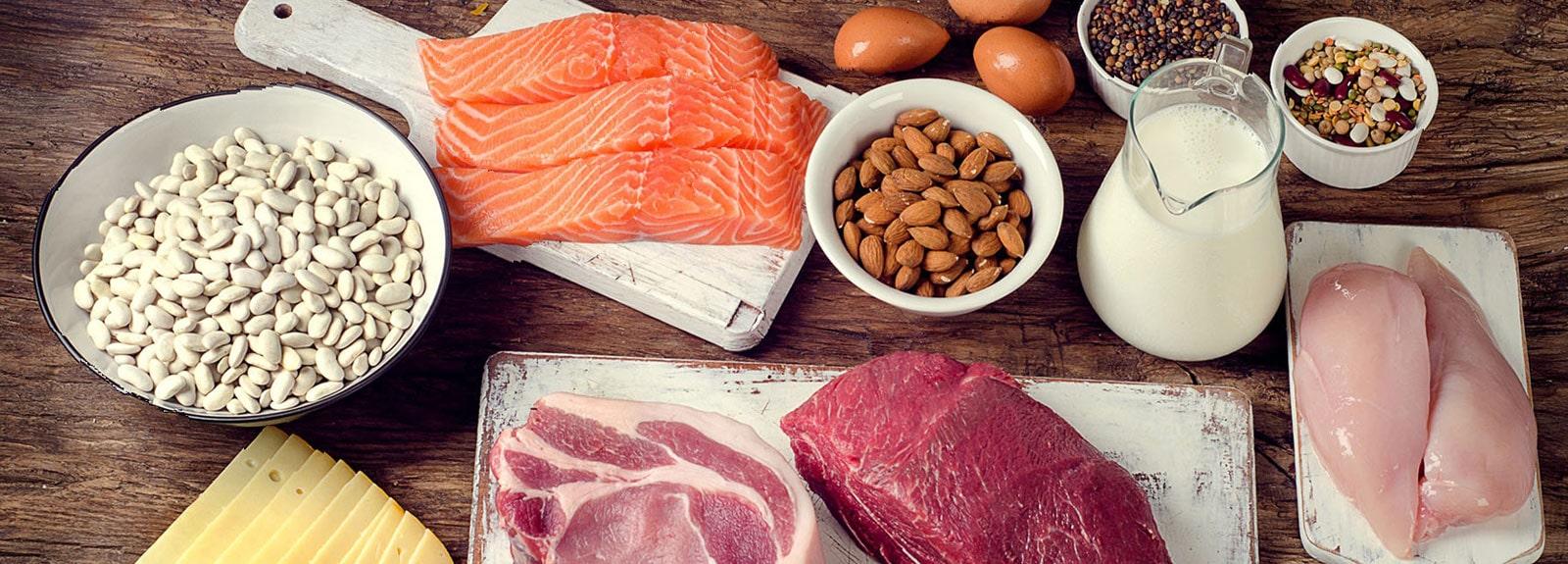

Live Your Best Life With Protein


Live Your Best Life With Protein
Today, most people consume too much protein at dinner and not enough at breakfast. In recent years, scientific studies have shown that a balanced consumption of protein throughout the day promotes healthier aging. Here are some explanations and tips to help you adjust your diet.
Living without protein is impossible!
Protein is needed for almost all our body’s important activities, such as digesting, walking, concentration, and fighting infections. Protein is the basic component of all human body cells and is responsible for the daily renewal of our hair, nails, and skin. Moreover, protein may promote healthier aging. Studies have shown that a protein-rich diet and a more balanced protein intake throughout the day (between 25 g and 35 g of protein per meal) better preserves lean body mass (all muscles, bones, and organs) and promotes better appetite and weight management. Balancing our protein intake may be challenging, as we consume on average 10 g of protein in the morning, 15 g at noon, and 65 g at dinner.
| Examples of foods and their protein content | |
| Food (serving size) | Protein content |
| Whole-wheat bread (2 slices) | 10 g |
| Natural peanut butter (30 mL) | 7.5 g |
| Milk (250 mL) | 8.5 g |
| Cheddar cheese (50 g) | 12 g |
| Chicken breast, grilled (100 g) | 31 g |
| Canned tuna (100 g) | 25.5 g |
| Tempeh (100 g) | 18 g |
| Tofu (100 g) | 10 g |
| Lentils (100 g or approx. 125 mL) | 9 g |
Did you know?
Protein is important to ensure proper muscle maintenance and bone strength, which help to protect older people from serious injury during falls.
The challenge: Boost your breakfast
Unfortunately, your beloved toast, jam, and black coffee doesn’t provide much protein. No problem! Generously spread your toast with ricotta before adding your jam, and bingo! Your breakfast has more muscle. With 15 g of protein per 125 ml, ricotta is a great addition to your waffles, pancakes, or toast. The same goes for cottage cheese. Combine it with your favourite fruit, some granola, and a drizzle of maple syrup for a new, hearty breakfast. To boost the protein content of your muffins, banana bread, and smoothies, add skim milk powder (6 g protein/30 ml), Greek yogurt (10 g protein/100 g), and nuts or seeds. Keep in mind that pumpkin seeds (5 g protein/30 ml) and hemp seeds (6.5 g protein/30 ml) contain more protein than all other nuts. These ideas will “beef up” your breakfast and contribute to your long-term health at the same time.
 Written By
Written By
Julie DesGroseilliers is a registered dietitian, speaker and author of four books, including PROTÉINES (Les Éditions La Presse), her latest bestseller. This food-loving registered dietitian is also a TV and magazine columnist and food industry consultant and recipe writer – www.juliedesgroseilliers.com.
 Written By
Written By



